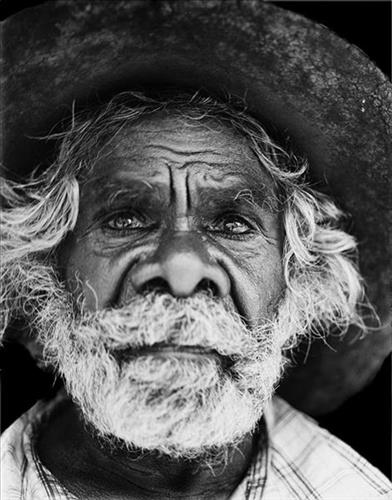111581832336
Wilarra
“2 Rockholes other side Punmu Kayili (North) all the way keep going Kakarra (East) long way. Dingo-mili ngurra (Dingo’s home).Big one is Willarra, dingos all stay in that place together wild one (dingo) became a quite on. All the dingos come from that place. Make a kuna (faeces) go home. Kirl Kirl (well 36), Pinlankujarra and Karrarrngarri clay pan are here too”
– Wokka Taylor
This painting depicts a number of significant sites yinta (waterholes), rockhols and claypans.
This site [Wilara] is united with the moon in significance. In the Jukurrpa (dream time) dingoes travelled from Wilarra another site by the same name which lies on the edge of the large salt lake, Nyayartakujarra (Lake Dora), following the call of the moon. Wilarra, which also means ‘moon’ in Manyjilyjarra, is a very significant site lying on the edge of the large salt lake, Punmu Warle [Lake Dora]. The dingoes gave birth to a litter of puppies at Wilarra, where they were looked after by the moon. The dingoes stayed for a time at Wilarra, scratching into the earth to create several distinctive small salt water pools, which are still visited by the Martu for their healing properties. Later, the dingoes continued travelling east toward the rising moon, stopping as they went to sites like Kirl Kirl (well 36) Pinlankujarra and Karrarrngarri clay pan, finally stopping at Kinyu (Well 35).




